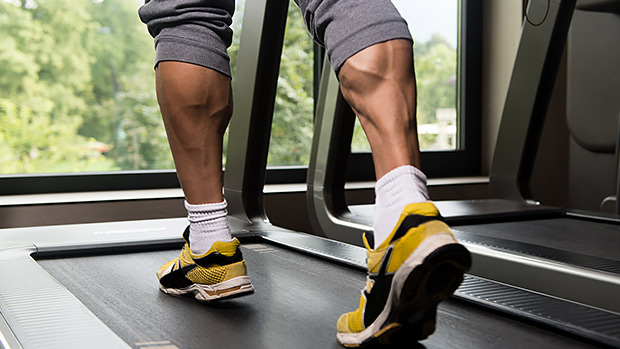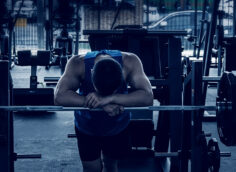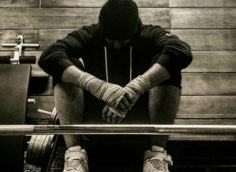I haven't done much direct work for my calves for years. It's not because they were naturally big and didn't need it. Far from it. Training them was just so... unsatisfying.
A 5-inch range of motion? Big snore. Besides, my calves never really responded that much. So I gave up.
I figured that if anybody wanted to take a picture of me, sans long pants, I'd do what the young Arnold Schwarzenegger used to do during photo sessions before he fixed his lower-leg shortcomings: Just stand knee-deep in some lake to hide the suckers. And if a body of water wasn't handy, I'd find a horse trough or one of those freeway safety barrels full of water.
It turns out, though, that my disdain of calf work might actually lead to my premature death because there's increasing evidence that calf circumference correlates with cardiovascular disease – the smaller your calves, the harder your heart has to work.
Big Calves, Healthy Heart
I know it sounds a little far fetched that the size of your calves could have anything to do with the ultimate health of your heart, but multiple studies seem to have confirmed it.
In 2014, The Journal of Biomechanics reported that men and women with chronic heart failure have smaller calf muscles than people with healthy hearts.
Similarly, another study, this one published in Geriatrics Gerontology, found a direct correlation between calf circumference and the Framingham risk score (FRS), which is an algorithm used to estimate the 10-year cardiovascular risk of an individual.
The latter of these two studies included 540 men and 683 women and they found a significantly negative association between the FRS and smaller calf circumference in both sexes. The bigger the calves, the lower their risk of cardiovascular disease.

How the Hell is This Possible?
When you root around a bit, this association between calf size/strength and the health of your heart actually makes perfect sense. The calves are part of what's known as the "veno muscular pump," which includes all the muscles of the lower limbs. Together these muscles, but particularly the calves, form a kind of "second heart."
The real heart, the one in your chest, uses powerful contractions to send blood surging through the arteries to provide oxygen and nourishment to every cell in the body. It's such a strong and efficient pump that it only takes a few seconds for all that blood to permeate the lower limbs.
But all that blood, now sucked dry of oxygen, needs to find its way back to the lungs so it can get re-oxygenated and then travel back to the heart to start the bloody roller coaster ride all over again. The trouble is, that blood has to work against gravity. That's where the muscles of the lower leg come into play.
The first part of the "veno muscular pump" originates in the foot. When you take a step, blood that's pooled into your heels is ejected upwards into the small vessels of the soleus muscle and the larger vessels of the gastrocnemius.
During walking, the veins in the gastrocs act like nozzles and eject a powerful jet of blood into the popliteal vein, which then continues northwards where it gets an additional muscular heave-ho from the thigh muscles.
The one drawback of this veno muscular pump system is that the upward pressure stops when you stop moving or sit down. Luckily, the veins in the lower body have one-way valves that prevent the blood from flowing backwards.
Nevertheless, these vessels can become weak (from disease, inactivity, or old age) and allow blood to flow backwards into the lower legs and feet, potentially leading to swelling, cramping, blood clots, and even leg ulcers.
Remarkably, even a stiff ankle can impair this venous flow, as can weak and underdeveloped calf muscles. Oh, you'll still get by without an efficient veno muscular pump system, but it puts more strain on the heart, which, over the long run, can increase your chances of cardiovascular disease or inefficiency.
What to Do
The answer of course is to work your calves regardless of whether or not you have any aspirations of being a sock model, a men's shorts model, or a competitive bodybuilder.
I, for one, will no longer ignore them in my training, and if I stumble across any heart patients, I'll urge them to start training their second heart.
References
- Hsiang, et al. "Calf circumference and risk of cardiovascular disease," Geriatrics Gerontology International, 03 Oct. 2020.
- Panizzolo, et al. "Gait analysis in chronic heart failure: The calf as a locus of impaired walking capacity," Journal of Biomechanics, Volume 47, Issue 15, 28 November 2014.




